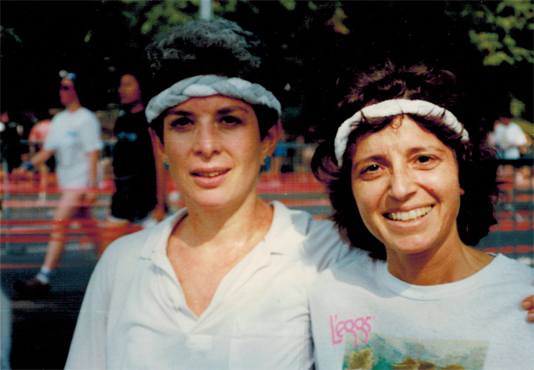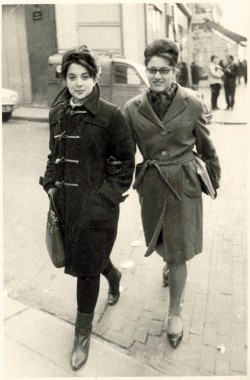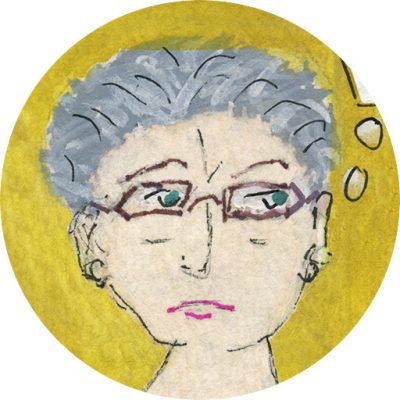A few weeks ago, my friend and former jogging partner Ellen Sweet sent me this snapshot that she had just discovered while scanning old photographs into her computer. I remembered the picture, and I may even have a copy of it somewhere, but it was something of a shock to see it illuminated on my computer screen. The shot probably dates from the early 1980s when I had first started running along with half of Manhattan. From the beginning Ellen and I challenged ourselves by entering races in Central Park– races for women only, which this image seems to memorialize. (I should say for the record that Ellen, thinner and lighter, always ran faster than I did.) I think my personal best was a 10 and one half minute mile. A person could well walk faster than that! Still, we were quite faithful about our practice, running almost every morning, usually around the reservoir in Central Park (before it was cleaned up and named after Jackie Kennedy). I never imagined stopping. Ellen still hasn’t.

Somewhere around the time of the new millennium, knee problems forced me first to have an arthroscopy and then, since the surgery didn’t accomplish much, to stop running altogether. I joined a gym and switched to machines. More recently, bored with the gym, its tv screens and spandex bodies, I’ve mainly been walking. But now my same knee is back causing problems, and I’ve been making the rounds of doctors, x rays, mris, and relearning words like meniscus and patella. Tears, not the kind you shed. When I called the first orthopedist recommended to me, the secretary, after asking for my date of birth, told me that I was too old to see this particular doctor, who specialized in sports medicine. So in case I hadn’t noticed, I have officially entered the stage of geriatric medicine. The senior card for the subway is one thing; being rejected by a doctor for being too old is another.
Here’s what I’ve been wondering, not least as a memoirist. Am I still the person in the picture who jogged around the Central Park reservoir, exchanging profundities with Ellen? Also kvetching. The problem goes well beyond this particular picture―from only, let’s say, 30 years ago. The ache in my left knee suggests a connection, but what about the girl in my new memoir? The girl I supposedly was 50 years ago? I’m committed to recreating the past as faithfully as possible, and I do remember 98% of what I’ve written, especially because I have the letters I wrote home to my parents then. Setting aside whatever I might have lied about in those letters, or, more likely, omitted, do I remember “me”? Oddly, my friend seems “the same.”

It’s easy enough to see the differences―I had dark hair, wore contact lenses not glasses, and was at least ten pounds thinner. For me, though, the challenge as a writer is to find a way back into the feelings of that person: the jogging woman who had just lost her mother, a “never-smoker,” as they say now, to lung cancer, and stopped smoking; and the girl who dreamed of being an ex-pat so that she could smoke her way into Left Bank sophistication, stroll down the streets of the Latin Quarter, and try to look like an existentialist? Do I want to remember that girl, that woman, to reexperience those past emotions, many of which were a lot more painful than my injured knee?
That’s what I’ll be asking myself when I sit down with my “first pages” of my Paris memoir, pages to which I’m not supposed to be making mere “cosmetic changes,” when I’ll choose the version I am strong enough to remember.
